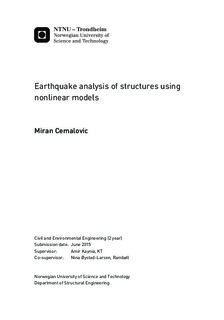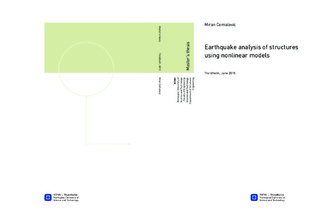| dc.description.abstract | Throughout the governing design codes, several different methods are presented for the evaluation of seismic problems. This thesis assesses the non-linear static and dynamic procedures presented in EN 1998-1 through the structural response of a RC wall-frame building. The structure is designed in detail according to the guidelines for high ductility (DCH) in EN 1998-1. The applied procedures are meticulously evaluated and the requirements in EN 1998-1 are reviewed. In addition, the finite element softwares SeismoStruct and OpenSees are utilized and evaluated. The results revealed that even though expecting, and designing for, high ductility, the structural response remained nearly in the elastic range. The elastic behaviour
was a result of outsized and heavily reinforced members, with emphasis on the lower storeywalls. The reduction of global stiffness caused by the selected time-history ground motions was greater than the recommendation in EN 1998-1. The non-linear static analysis rendered reasonable results in terms of displacements for the first-mode dominated structure. However, it has been demonstrated that the structure s natural sensitivity to multi-degree-of-freedom effects limited the static analysis in terms of revealing possible structural behaviour. | |

